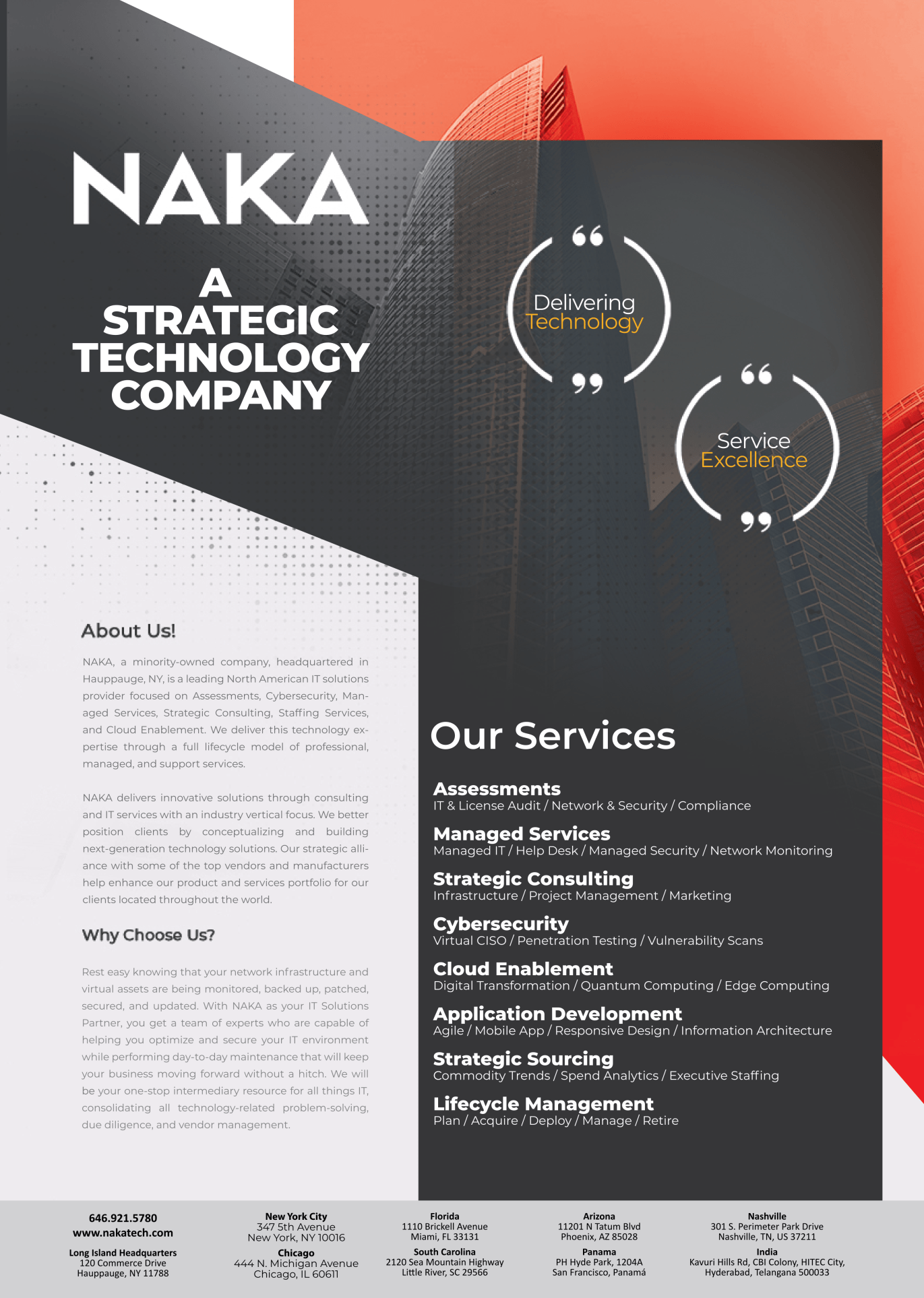Application Modernization Roadmap: Moving to the Cloud Secure & Fast

Application Modernization Roadmap: Moving to the Cloud Secure & Fast
Post pandemic times have seen a frequent movement of various companies and organizations private or public towards the cloud. Moving towards the cloud in the 21st century is one of the most modernized and thoughtful initiatives. But the initiation of the idea of cloud needs beforehand preparation of Technical architectural and managerial transformations. Covid have taught us the hardships of not being able to rely on hard copies or physical entities only. When the world around us was trying to cope up with covid the companies and organizations likewise faced the trauma of the absence of their complete workforce, thus affecting the quality and quantity of work.
The appeal of the cloud reaches beyond immediate benefits and advantages. Various other parameters such as provisioning resources at the touch of a button and moving to pay-as-you-go IT infrastructure are the better outcomes of indulging with cloud technology. Today, applications running in the cloud are the platform of choice for business modernization through innovation. Modern applications and technologies introduce practices that enable organizations to unlock the insights, the visionary, and business value in legacy applications. These steps are taken to further help the companies in lowering costs, future-proofing infrastructure, and improving agility. They help to significantly shorten the time span from new idea initiation to the secure launch of new business initiatives. This allows quick rollout of new points of differentiation for enhanced customer service, improved data access, and visionary customer insights. Enterprises can rapidly disrupt the competition – or rapidly respond to disruption. More and more businesses, companies are trying to move towards the cloud in order to move their legacy forward that will reduce operational and developmental costs. It not only reduces the cost per se but also improves the availability of advanced cloud services for example artificial intelligence, data science, and many more.
IT modernization
This cloud technology allows exploration for ways to lower costs and complexity, increase speed, and improve agility and security through IT modernization. Various benefits of IT modernization are:
1)Simplify and optimize IT
2)Modernize applications and data
3)Operate and secure multi-cloud at scale
4)Upgrade from monolithic applications to modular applications
Strategies for modernizing applications and data
The key strategies for modernizing applications and IT assets are as follows:
1)Migrate to cloud Improve agility
With information being kept online the transfer of documents, files and folders becomes easier and hassle free. Cloud computing also allows the creation of information silos that are created within the departments or within the teams of any organization. Information silos are the group of members who keep the knowledge of understanding and information well within the group. This kind of a limiting attitude is what restricts the interdepartmental or within the department’s cooperative behaviors.
2)Modern cloud-native platforms
DevOps can be one way of approaching application modernization. The technology is mainly focused on removing the barrier between development and operations within the organization’s system. DevOps, as we know, is the amalgamation of continuous integration, processing, deployments factors. These factors allow the automation of the process at cascaded levels. Thus the distributed stages of the process can ease out the automation testing and speed up other processes while minimizing any kind of human errors. Mainframe modernization can be one of the ways with which we can achieve the goals that we seek. To improve the performance,security and other possibilities.
3)Architectural transformation
The managed service providers (MSPs) fragments the complex software into independent components. Each component is being given a specific task and function. This step taken helps reduce the complexities that hinder the implementation in its entirety. By decoupling and simplifying the structure into simpler fragments it helps in faster application deployments. Any kind of improvements or modularization can be done at different levels individually.
4)Mitigate skills shortage
The total cost of ownership i.e TCO for any enterprise or company is the sum of all direct and indirect costs incurred by the software, which becomes the critical part of the ROI(return of investment) calculation. TCO is the projection of the expenses that have been incurred during the entire process of producing, purchasing, deploying, using,or retiring a product. Application modernization may help in reducing the TCO application modernization problems.
5)Unlock the business value in applications
6)Re-architect or rebuild applications
This step is taken to enable us to adapt to the cloud based platform for certain applications. Refactoring is the process that moves the applications to the cloud infrastructure while reconstructing them to suit the cloud environment. Some examples would be instead of going for a complete rebuild we can opt for the containerization process. Each container can then be attached with microservices. Both the steps refactoring or restructuring means undergoing a major change in the application’s configuration.
7)Expose existing applications through APIs to leverage existing assets and applications
Application programming interfaces (API) are the software tools that allow for communication between two or more software applications and provide services to each other. They are the invisible backbone of the application modernization technique which opens up a whole lot of possibilities for better and improved service availability.
8)Gather the resources
Modernization should not be only limited to an application but data modernization is also a concept worth taking a shot with. Just how for legacy certain companies want to continue to keep certain applications running which requires the hierarchical databases. These applications alone cannot meet the current demands of big complex data, mobility, portability, social media, and artificial intelligence. Thus moving the data to modern data stores is needed. This step requires a special kind of knowledge.
9)Virtualization
Virtualization is the process of creating a virtual copy of the real version of something. These may range from a server to desktop, storage devices to operating system, network resources etc. With this technique at a particular time the single physical resource can be virtually shared among multiple customers or organizations. The machine on which the virtualization is going to happen is the host machine and the other counterpart is referred to as the guest machine. There are different types of virtualizations. Some of them are mentioned below:
Hardware virtualization
Operating system virtualization
Server virtualization
Storage virtualization
10) Containerize applications
Containerization is the process of trying to eliminate the chaotic nature of cloud migration and to simplify the entire procedure for better deployability. It is a form of operating system virtualization with the help of which applications run in an isolated user space or spaces denoted as containers. All of the separate containers use the same operating system for their operation. Containers are often referred to as lightweight which implies that the machine does not need a separate operating system for different areas within each application. The benefits of containerization are as follows:
Portability:
Not tied down with one or dependent, it is portable and easily portable with the ability to run uniformly and consistently across many platforms or the cloud.
Agility:
The containers have shifted to open container initiative (OCI) from the simple developer tools and a universal package. This allows them to meet the unique demands with unique solutions for a company.
Fault isolation:
Each containerized application can be isolated and can work independently. Just like how in series connection a failure at a single point can lead to the entire structure failure but the parallel connection does not allow that. Similarly, containerization is the parallel connection where failure at one container can be isolated. This will prevent affecting the other containers from failure.
11)Strategies for modernizing applications and data
To develop and secure cloud-native solutions. Cloud-native solutions for modernizing applications and data are one of the key outcomes of cloud technology. The cloud native solutions are not only to be developed uniquely but are also to be well secured. This ensures better handling for security issues and rather modernized ways of application upgradation.
12) Migration strategy
Determine the application that fits your definition of needs for the company within the cloud migration framework. Sorting out the requirements with up to date knowledge of what the market demands is the key to move forward efficiently. Recognize the applications that the company requires and keep the apps that also fits your cloud mechanism.
1)Retiring:
Retiring the application is one of the basic steps before moving to any form of advancements in the process. Sorting out the requirements of the company and accordingly choosing which applications to keep or retire is a great investment of time and energy.
2)Retaining
Just how you sort the applications to be discontinued, similar is the procedure for keeping certain legacy applications running. Because the use of cloud technology comes with its own set of rules and compliances to be followed, thus it is a smart idea to keep certain apps running. The already prepared database of existing data and information is one such thing that you would not want to let go of. Certainly, in later parts of the process, the database can either be updated to any other platform in phases or to either phase them out or replace them later.
3)Repurchasing
This move is about opting for the software-as-a-service model from the existing perpetual licensing system. The benefits that come out of such a movement are manageable subscription, fees, lower initial costs, etc. It also helps in reducing other costs that arise from the hardware installation, technical support, maintenance, licensing etc because all of this is covered under the services.
Some other additional methods are as follows:
Discover and assess application readiness
Plan and prepare the application for the cloud Decide which modernization methodology is appropriate
Identify the best target platform in the cloud
Test and validate the application prior to deployment.
Advantages of using cloud
Approximately 100% service availability
Approximately 50% of operational cost savings
Faster updates and launch of new features
Better productivity of staff
Enhanced development



